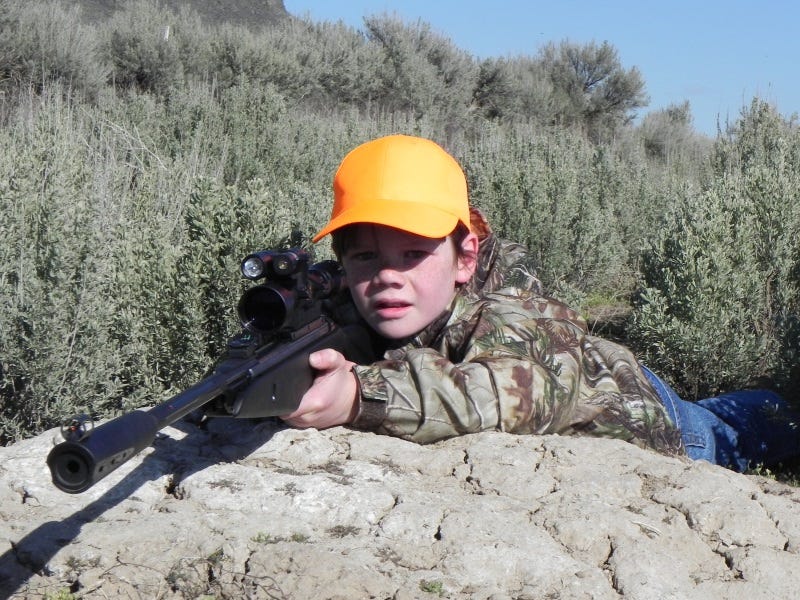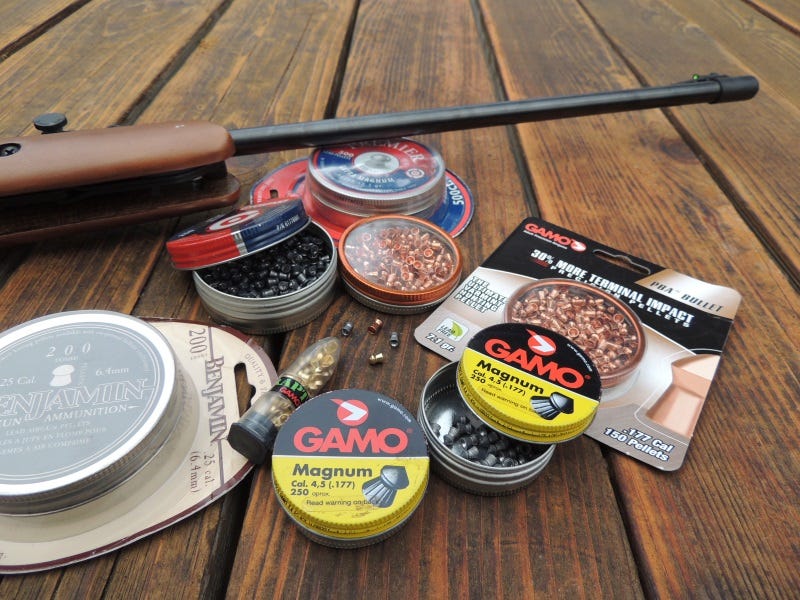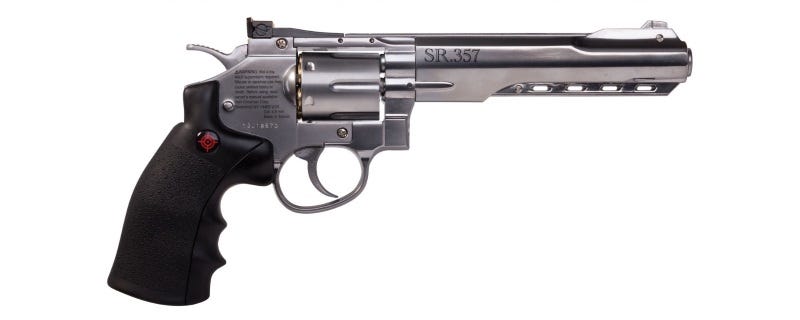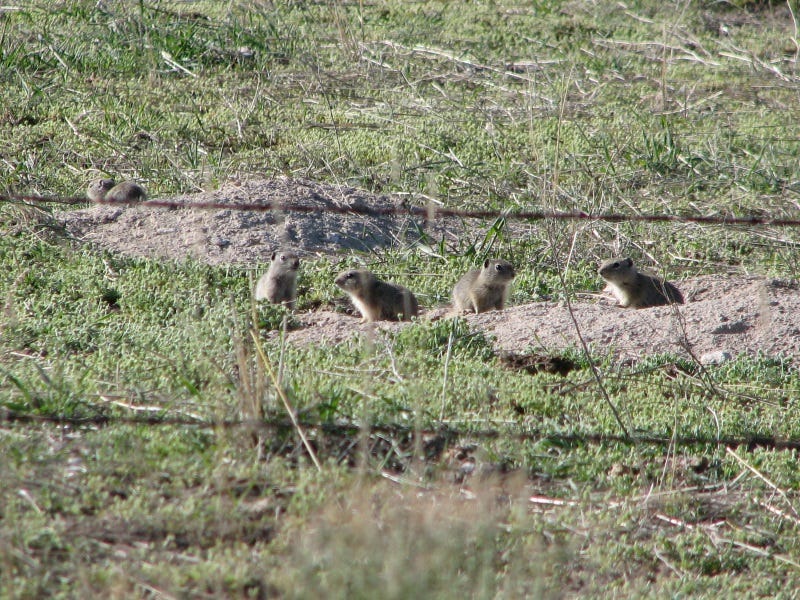Achieving Air Supremacy: Best Airguns for Home and Ranch

 A high-quality projectile enhances the accuracy of a mediocre gun, while a low-quality pill will downgrade its performance. For practice, use a wadcutter design. Opt for a tipped, lightweight, high-velocity round when reaching out to touch furred and feathered varmints. Photo by Gary Lewis
A high-quality projectile enhances the accuracy of a mediocre gun, while a low-quality pill will downgrade its performance. For practice, use a wadcutter design. Opt for a tipped, lightweight, high-velocity round when reaching out to touch furred and feathered varmints. Photo by Gary LewisPigeons.
If a person needs a good reason to have an airgun, it is the feral pigeon. They are a nuisance, costing homeowners, businesses, farmers and city governments hundreds and even thousands of dollars to control. Control, because eradication of this invasive species is nigh on impossible.
Pigeons can carry toxoplasmosis, cryptococcosis and salmonella. Their droppings spread diseases and promote the growth of fungus, which causes histoplasmosis. And although my friend, who manages a warehouse, can't pronounce those words, he knew he had to get rid of the pigeons.
I arrived in the middle of the day, did a quick reconnaissance and parked inside where I could use the vehicle as a rest.
The birds split when I arrived, but soon one came back. I already had a wadcutter in the tube of the break barrel airgun. I held center of the body and dropped the first pigeon out of the rafters. In two more visits, we had the rest of the fledgling colony cleaned out. Mission accomplished.
No matter what you call them—spring air BB guns, CO2 revolvers, variable-pumps, break-action rifles, pre-charged pump guns—I’ve used all to defend home, business and camp against pigeons, rats and snakes, and these work very well on other nuisance animals—especially around the farm—such as raccoons, coyotes, possums, rockchucks, ground squirrels and other vermin.
 For rockchucks, woodchucks, rabbits and similar size furred pests, a .22 or .25 caliber is the preferred choice. Photo by Gary Lewis
For rockchucks, woodchucks, rabbits and similar size furred pests, a .22 or .25 caliber is the preferred choice. Photo by Gary LewisWhen dealing with any of those animals and birds, most often shots are close, between 10 yards and 35 yards, which means you don’t need a traditional rimfire or centerfire rifle to deal with the threat. In neighborhoods, the airgun is the best choice because it goes unnoticed by neighbors.
Airgun targets are likely to be small. If it is a food animal—rabbit, quail, tree squirrel—the air gun can also be a good choice. That’s because you won’t waste meat with a bad shot. However, even with airguns there is little margin for error. If there is such a thing as knockdown power, most air guns don’t have it. Instead, the diminutive lead projectile disrupts brain function or destroys an organ and death is quick. That's why I like a scope on an airgun. The shot must be precise.
Because the targets are small—the vital areas on a squirrel are about one-inch in diameter—the effective range should be considered something under 40 yards.
 A head-shot California quail headed for the frying pan and a bed of spinach and mushrooms. Photo by Gary Lewis
A head-shot California quail headed for the frying pan and a bed of spinach and mushrooms. Photo by Gary LewisThe Air gun Arsenal
In my stable of airguns, which is often in a state of flux, I like to have a handgun or two, as well as a scope-mounted break-action rifle—.177 (for feathered pests) and a 22- or 25-caliber for small game hunting.
The biggest segment of the airgun market in the $50 to $70 range. The next segment starts at about $70 and runs north of $250. But there are also buyers for airgun systems that run $600 to $900. Four main calibers are offered: .177, .20, .22 and .25. Most common are the .177 and .22. If the pests are small and feathered, the .177 is optimum. If an occasional rat, snake or squirrel might be contemplated, the .177 is a great choice.
If the pest in question is furred, a .22 caliber bullet brings the energy required to put woodchucks, rockchucks, feral cats, jackrabbits, armadillos and possums down for good.
One of my favorite new airguns is the Crosman Remington 1875 with a steel frame and barrel. The grips are faux ivory. It might not be as precise a shooter for pest control, but it is nickel-finished and it looks like it came straight out of the Old West. Suggested retail $139.99
For the shooter who prefers double-action and greater precision, the six-shot Crosman SR357 is a heavy, full metal CO2 revolver with an adjustable rear sight. With steel BBs, it reaches speeds of 450 feet per second. Suggested retail $99.99 to $129.99.

Billed as the world's only 10-shot break barrel, GAMO's Swarm Maxxim comes with a 3-9x40 airgun scope with a regular duplex crosshair. The stock is all-weather molded synthetic and the noise-dampened and fluted barrel cocks with just 32 pounds of effort. Available in .177 and .22, this rifle also comes with a two-stage adjustable trigger. With the right projectile, it reaches 1,300 feet per second. Suggested retail is $199.99
 SwarmMaxxim
SwarmMaxximBranded a Ruger, the Yukon 22 caliber is built with a wood stock and a Umarex ReAxis gas piston and a noise dampener. It comes with a 3-9X32 scope, rings and rail. Expect 850 feet per second with a lead pellet and 1,050 fps with an alloy pellet. Suggested retail $235.35
I've long been a fan of the 25-caliber Benjamin Marauder and was eager to try the Benjamin Bulldog 357. In hand, it inspires confidence, shoulders fast and is quiet. This one gets out of the barn and into the woods, capable of taking down big game. A bolt-action in a bullpup style stock, the air reservoir is rated at 3,000 p.s.i., which is good for 10 shots at 800 feet per second. Suggested retail is $899.99
 Benjamin Bulldog 357
Benjamin Bulldog 357Airgun optics and Illumination
For pest control and varmints, the nature of the hunt calls for precise shot placement. Since many varmints are active after dark, a weapon-mounted flashlight and/or a laser can make the difference.
At close range, the optic makes the air rifle deadly accurate. Use a scope designed for air rifles. The dual forced recoil of a spring piston gun can pop lenses out. Look for one with an airgun rating.
On a long gun, consider mounting a light. Attached to a rail or mounted on a rifle scope, a lightweight LED unit can light up a target at the touch of a switch.
 Air rifles fill a niche for specialized hunting situations where the noise produced by a rimfire round might bring unwanted attention. Quiet and accurate, a break barrel air rifle can help control pests around the garden. Photo by Gary Lewis
Air rifles fill a niche for specialized hunting situations where the noise produced by a rimfire round might bring unwanted attention. Quiet and accurate, a break barrel air rifle can help control pests around the garden. Photo by Gary LewisWhen you buy a gun for accuracy, don't skimp on projectiles. Today's airgunner can choose from lead or lead-free, from wadcutter to domed or polymer-tipped.
"The revolution in air gun pellets is similar to what has happened in centerfire rifles,” said Tom Anderson, who works in the Sandpoint, Idaho, North 40 store. He has watched the ongoing upgrade of airgun offerings and sees definite advantages in high-performance pellets.
"Lead-free will give you a faster speed than a standard pellet," Anderson said. Another reason to use lead-free is if, as is the case in some states, local regulations require it.
One of Anderson's favorites for pest control is the polymer-tipped .177 GAMO Red Fire. "It's very accurate and slick through the air, with the ability to mushroom out on impact." Another option is the Rocket, which is also available in 22 caliber.
 Ground squirrels can destroy landscaping and they are also known to be carriers of the plague. Photo by Gary Lewis
Ground squirrels can destroy landscaping and they are also known to be carriers of the plague. Photo by Gary LewisTo feed a 38-caliber, a hunter should try several different styles, pick one that performs and buy a lifetime supply. However, if you do just that I offer this warning: Don't shoot pigeons in the garage with the Bulldog unless you want holes in the ceiling.
